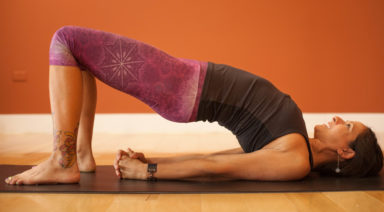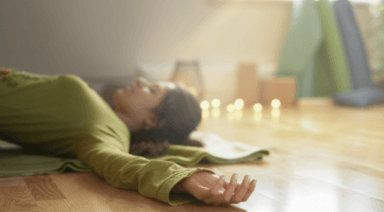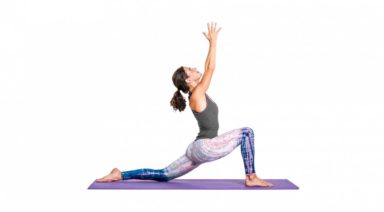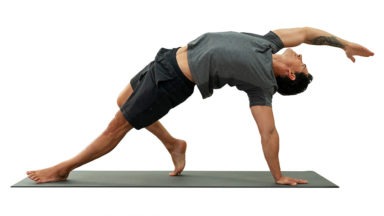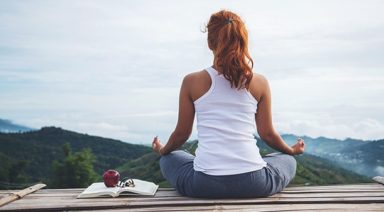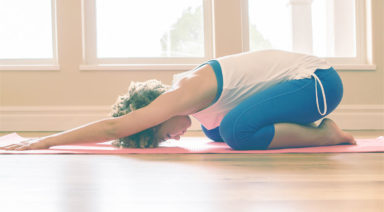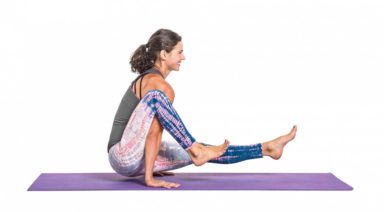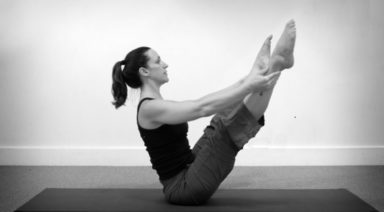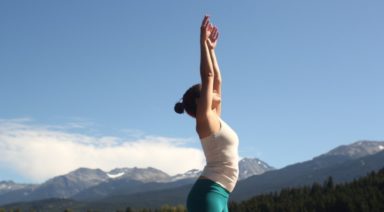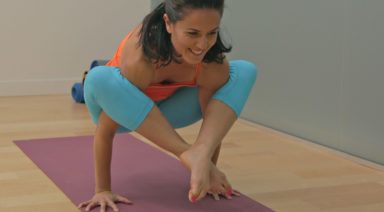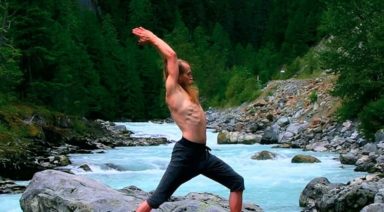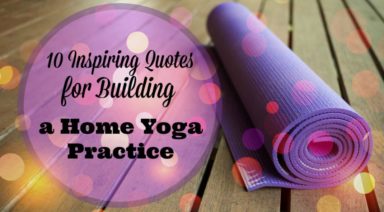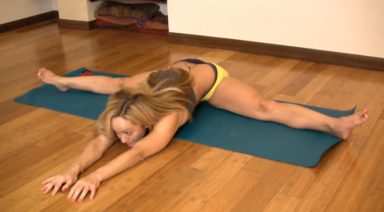Yoga Nidra Meditation: Best Kept Secret to Deep Relaxation

Chances are you’ve been in a yoga class where the teacher gives verbal cues or instruction during a usually silent savasana. You’re encouraged to breathe deeply, visualize, or focus on specific body parts, one at a time. As you leave the studio, you wonder: What happened during final savasana? Why do I feel so great? How did I get this incredibly calm and relaxed? It’s not magic–your teacher most likely just incorporated a few aspects of Yoga Nidra meditation into the final posture.
What is Yoga Nidra?
Is it a pose? Guided imagery? An affirmation? A visualization tool? Mind-body therapy? A relaxation exercise? Yoga Nidra can be all of these things, and more–in essence, it’s a highly effective meditation technique that’s been around for thousands of years. Here’s a primer from some of our Gaia experts to help explain and demystify the practice of Yoga Nidra:
Armand Sagredo says that the method is so inherently powerful it had been kept secret for nearly 4,000 years, until the 1960’s. Through Yoga Nidra you can enter the realm of the subconscious and create effective, seemingly magical changes in your life, and relax your nervous system in the most powerful way available to humans without chemical agents. read more from Armand
Yoga Nidra is a secret weapon many yogis swear by and one hour of the meditation can be as effective as three hours of regular sleep. It’s not about conscious effort, but about conscious relaxation.
Gwendoline Odeluga tells us that Yoga Nidra is a scientific method for achieving a deep state of relaxation, and is also a bridge to the higher branches of Yoga. During a session, she says, you are not in a deep sleep–you are still fully aware. You relax physically yet stay mentally alert and in a place of great creativity. Yoga Nidra makes it possible to effect profound change in your body, mind, and life. read more from Gwendoline
Yoga Nidra is a technique that increases awareness of sensation in the muscular, connective and nerve tissues, David Flores explains, by breathing into those areas and sending signals for relaxation. You can feel energy flowing up and down the chakras–it’s even possible, with ongoing practice, to dissolve sensations from the body altogether. He says that Yoga Nidra is like a “voice-guided eraser that slowly fades your body into the ether.” read more from David
Doesn’t a “voice-guided eraser” sound like an amazing tool for relaxation and stress-reduction? It is! And it’s so simple and effective, you can practice anytime you need to take the edge off disturbing thoughts, raging emotions, bodily tension or a combination of all three.
According to the Yoga Nidra Network’s resource guide, there are a variety of approaches to the practice of Yoga Nidra, each with its own value and purpose. The easiest way to begin is to have a yoga teacher walk you through the steps or follow an audio version of a guided meditation. The recordings are all a little different: short or lengthy; music in the background or quiet; deep or soothing vocals; various scripts for sleep, tension relief, focusing, intention, and more. Choose an audio guide with the voice, tone and sequencing right for you.
A 10 Step Guide to Deep Relaxation with Yoga Nidra Meditation
Here’s a sample of what a Yoga Nidra session might look like. Thanks so much to our gaia.com expert Jill Miller for providing the template for this beginner’s guide. And remember that this is just one example–there are many Yoga Nidra practices to choose from!
- Take time to get comfortable. Give yourself at least 10-15 minutes for a short version of the practice. Lie down in a quiet, calm environment. Cover yourself with a light blanket; you can also cover your eyes with a towel, if helpful. Try to remain still and present. Close your eyes and relax–get ready to follow the sound of the voice guiding your practice.
- Set your sankalpa. Visualize a deep resolve or positive intention for your Yoga Nidra. You can say it out loud or to yourself a few times. Feel the sankalpa spread throughout your body, suffusing your awareness. Then release the intention and let it go. The seeds of the intention will remain even after you drop your conscious focus. You can learn more about the power of sankalpa in Cheryl Lyn’s informative article, Magical Map to Manifesting with Yoga Nidra.
- Open your senses. Welcome any smells, tastes, sounds or sensations in your current environment. Notice feelings, thoughts and images as they arise and fade away–let your body and mind just “be.” With eyes closed, allow your internal vision to take shape. Rest easy, but stay curious and open to the practice. Focus your attention on each particular instruction as prompted by the audio guide.
- Become aware of your breathing. Breathe in and out through your nose with simple, welcoming breaths. Notice the flow–invite your breath in and then out. Remember to take slow, relaxing breaths, not ujjayi breaths. Release a bit of tension with each successive outbreath. Vijai Sharma, Ph.D., says to use the imagination in order to increase the exhalation. He encourages us to imagine inhaling through the crown of the head straight to the heart, and then exhaling from the heart all the way down to the toes and soles of the feet. Imagine taking a whole body inhale, and then a whole body exhale. Repeat a few times.
- Practice countdown breaths. Next, breathe in while mentally saying the number ’40.’ Breathe out and mentally say the number ’39.’ The next inhale is ’38,’and the next exhale is ’37.’ Keep counting backward all the way down to ‘1.’ There’s no need to rush. Don’t get frustrated if you miss a number. Be friendly to yourself if you fall asleep or forget to count–begin counting again when you get the next cue from the instructor. Feel yourself relaxing more deeply with each outbreath as you count backward from 40 to 1.
- Progressively relax your muscles. Relax every muscle in your body by squeezing and releasing–focus on each unique muscle or muscle group as you go. For example, your instructor might ask you to tighten your hands as much as you can–tighter, tighter–and then release. Each Yoga Nidra uses different sequences or progressions to take you through the body; just go with it. Don’t overthink or force yourself to concentrate; simply follow the guiding voice from location to location within your body. You can subtly encourage each muscle to “breathe a little with you,” in and out, as you tighten and release.
- Become aware of your whole body. Now let go of the tightening sequence and take a full body tour. First, become aware of your whole body all at once. How do you feel? Let yourself be light and weightless, or heavy and dense–just experience whatever arises. Your guide may ask you to move your awareness to different parts of your relaxed body–organs, muscles, joints, skin and more–maybe into places you never even knew existed! Welcome any sensations you find there. Keep still as you continue to focus attention on each body part.
- Bring in the light! As you move through the sequence, the instructor may prompt you to imagine your awareness as a golden light touching each part of your body. Caress your eyes, your fingers, the space between your organs, your navel–suffuse your entire body, heart and mind with soothing light. Next, radiate that light outward–first to friends and family, then to everyone you know. Finally, radiate light everywhere, to all beings, and imagine light being sent back to you just as you are sending light out to them. Continue giving and receiving; let your sense of self and others start to dissolve. Bask in the radiant, shared sensation.
- Take some final breaths. Now come back to your breath. Don’t think too much about it–just experience the movement, in and out. Let your breath hold you, nurture you. You might be asked to revisit your sankalpa (intention).You can do so on an inbreath, and let it go again on an outbreath. Then return to the gentle rhythm of your natural respiration.
- Close the practice. Wiggle your fingers and toes. Start to move your body around. Notice: Do you feel energized and awake? Relaxed and peaceful? Tender and loving? Gently roll onto your side and sit up. Open your eyes and come back to waking life. Has your awareness changed? Feel any warmth, joy or soothing feelings you’ve generated in your body, mind, spirit…and beyond.
Sound intriguing? Yoga Nidra can be used as a tool for deep relaxation, but it’s also a fulfilling spiritual practice. Try this Yoga Nidra guided meditation and enjoy a dose of yogic “deep rest”–try it today.
And don’t just read about it: Get comfortable, open your ears, and give a listen. Remember how good you felt after your instructor incorporated just a few elements of Yoga Nidra into that final savasana? You can come home to yourself every day with that same deep relaxation–all you have to do is practice Yoga Nidra meditation.
9 Yoga Poses for Relieving Shoulder Tension

Yoga, when practiced regularly, relaxes muscle tension and in the process, also strengthens the relaxed muscles. Here are a list of poses that will help relieve tension around the shoulder area:

1. BALASANA (CHILD’S POSE)
Child’s pose is a very good way to start a practice. It’s also an excellent rest pose during a vigorous flow.
Come to your hands and knees, press your hips back into your heels. Open your knees out toward the corner of your mat and rest your belly and chest between your thighs; arms out in front of you and palms up. Allow your shoulders to melt downward. This is a gentle way to start warming up the shoulders.
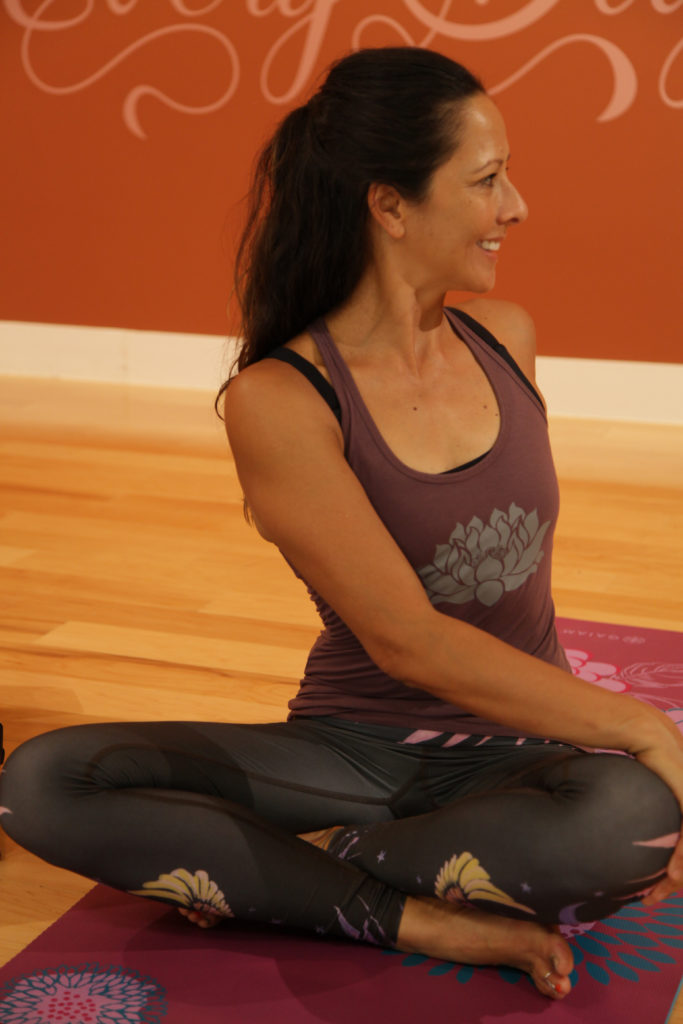
2. BHARADVAJASANA I (SEATED TWIST)
Sitting crossed legged, stretching your spine tall, place your left hand on your right knee and your right arm on the floor at your right hip. Draw a breath in and turn your shoulders and upper torso to the right.
The idea here is to stay gently grounded in the sits bones while extending the spine upward. If you’re twisting right, then ensure your left hip stays grounded. Lift as you inhale and turn as you exhale. Keep your gaze over your right shoulder. Try to keep your shoulders at the same height, and keep your neck soft. Your chin should be in neutral, but if you want an added stretch, you can tuck the chin. Hold for a few breaths, and then come back to center. Repeat on the left side.

3. SUPTA BADDHA KONASANA (RECLINING BOUND ANGLE POSE)
This pose offers a stretch across the chest and releases the shoulders.
Lying on your back, put a bolster or a block longways between your shoulder blades. Bring the soles of your feet together and allow your knees to fall open. If that is too intense, just leave the legs long and resting on the mat. Rest your arms by your sides. You will notice that if you turn your palms to face up, that will increase the rotation in the shoulders. You can either support your head or, if it feels good, allow your head to drop back (this will stimulate the thyroid).
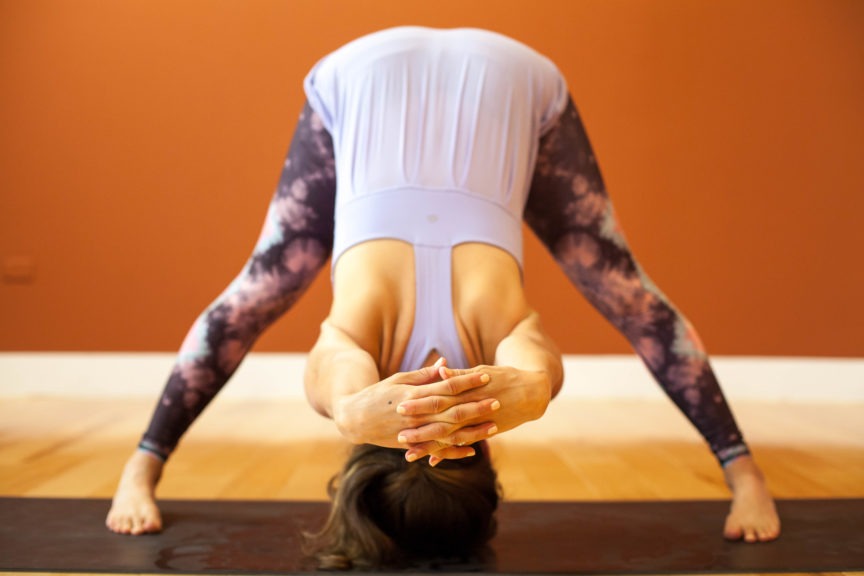
4. PRASARITA PADOTTANASANA (WIDE-LEGGED FORWARD FOLD)
Standing with your legs wide, turn your toes inward slightly and heels out. Bring your hands to meet behind your back and interlace your fingers. If that is not accessible to you, hold a towel or a strap between your hands. With an inhale, lift your chest and roll your shoulders back, extending the hands backward. On the exhale bend forward, keeping a slight bend in your knees. Allow gravity to draw your hands over your head. This creates a lovely rotation in the shoulders. Hold this pose for at least eight breaths (inhales and exhales).

5. SETU BANDHASANA (BRIDGE POSE)
Lie down on your back and bend your knees, feet hip width apart and on the mat. As you breathe out, press your feet into the mat and raise your buttocks, lifting the sternum towards the chin. Elongate the back of the neck onto the floor and breathe deeply. Reach for your feet with your hands, while rolling on to your shoulders. Keep your head still with your nose pointing up and gently press the back of your head into the mat, all the while lifting the hips.
You have the option of supporting yourself with your hands under your hips, or on a block. As you breathe, and your body starts to open, try to walk your shoulders closer to each other and reach your hands towards your feet. This will help open the chest. Move your chest toward your chin. This pose is also great for calming the mind.

6. PASCHIMOTTANASANA (SUPPORTED FORWARD BEND)
This pose is meant to release and relax your neck. Sit on the floor in front of a chair. Place a pillow on the chair, and rest your head on the pillow with your arms just under your forehead. Gently stretch the neck muscles by dropping the chin to the chest. Breathe in and out while resting your head on the pillow.

7. GOMUKHASANA (COW FACE POSE)
When we sit in front of a computer we round our shoulders and push our chins forward. This pose is great for helping to correct our posture.
Sit up straight in a comfortable cross-legged seat. Lift your left arm straight up, palm turned inward and thumb pointing to the back of the room. Bend that arm and reach it down between the shoulder blades. Now extend your right arm to the side, thumb down and palm facing back. Bend the arm and bring the elbow in to the side and reach up between the shoulder blades. Take hold of the other hand. If this is a little hard, use a strap between the hands. Lift your heart and press into your sits bones. Keep your chin in neutral and the neck soft.

8. SAVASANA (CORPSE POSE)
This pose is often used in meditation with the intention of complete relaxation.
Lie on your back, arms by your sides. Spread your feet apart and allow them to drop open. Let your arms rest by your sides, palms up. Allow your fingers to curl up naturally. Lift your shoulders, broaden them and then let them melt into the mat as you exhale. Breathe with deep, smooth breaths.
Support your body where you need to. Sometimes a bolster under the knees, or between the shoulder blades feels good.

9. YOGA OFF THE MAT
In a seated position, come to the top of your sits bones and gently draw your belly in. Lift your heart and allow your shoulders to slide down your back. Keep your chin in neutral and allow for a good distance between the ears and shoulders. This is also a good posture to hold when you are standing or walking. Keep the tailbone gently tucked under.
Remember to keep moving your body. It is joyful, gives us energy and keeps us healthy.


